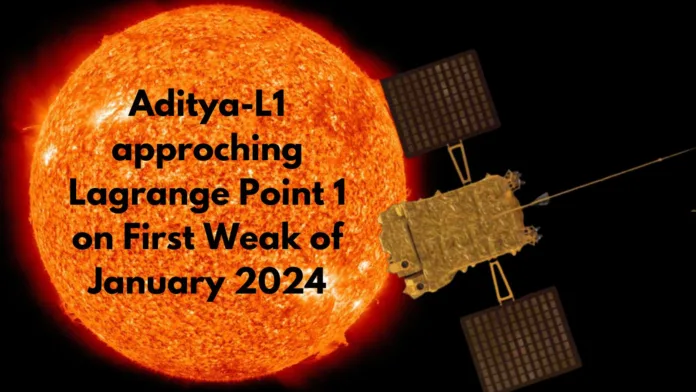Summary
- Milestone for Aditya L1: After traveling 1.5 million kilometers, India’s first solar mission, Aditya-L1, approaches Lagrange Point 1 in January 2024.
- Solar Breakthrough: Using the Solar Ultraviolet Imaging Telescope (SUIT), Aditya L-1 recently took previously unheard-of pictures of the Sun, revealing details in the wavelength range of 200–400 nm.
- Scientific Discoveries: SUIT’s observations provide novel understandings of the dynamic solar atmosphere and exact limitations on the solar radiation’s influence on Earth’s climate.
- Gaganyaan Progress: To launch Indian astronauts into space by 2025 and conduct an orbital test flight in 2024, ISRO will conduct critical tests for the Gaganyaan program in 2024.
- Space Sector Surge: Government policies are driving India’s space sector growth, with over 1,000 crores invested in space startups, securing India’s place in space exploration.
Aditya L1’s Journey to Lagrange Point 1
As Aditya-L1, the country’s first solar observatory mission, gets ready to land in its assigned orbital position at Lagrange Point 1 (L1) in the first week of January 2024, India’s ambitious venture into solar exploration is approaching a major milestone. Since its launch in February 2023, the spacecraft has traveled an incredible 1.5 million kilometers from Earth, putting it in a prime location for a thorough examination of the Sun.
Solar Insights: Capturing the Sun’s Images with Aditya L-1
Aditya L-1 recently accomplished a tremendous feat: it took the first full images of the Sun. An essential part of Aditya-L1, the Solar Ultraviolet Imaging Telescope (SUIT) instrument, was instrumental in this success. Captured in the 200–400 nm wavelength range, these high-resolution pictures revealed minute details of the Sun’s chromosphere and photosphere.
Also Read: Halleys Comet 2023: Reaching its Aphelion and Beyond!
SUIT Instrument: Unveiling the Sun’s Intricate Details
Using cutting-edge scientific filters, the Solar Ultraviolet Imaging Telescope (SUIT) on board Aditya-L1 takes pictures of the Sun’s photosphere and chromosphere. Recent observations have revealed remarkable details about the dynamic interaction of the magnetized solar atmosphere, including quiet Sun regions, plages, and sunspots. As per ISRO, these discoveries provide accurate limitations on the influence of solar radiation on Earth’s climate, thereby enhancing comprehension of this vital correlation.

Gaganyaan’s Progress: Key Tests in 2024
The Indian Space Research Organisation (ISRO) is scheduled to carry out critical tests associated with the Gaganyaan human spaceflight program concurrently with the accomplishments of Aditya-L1. These tests, which concentrate on the crew module and abort system, are essential preparations for the orbital test flight scheduled for 2024. The Gaganyaan project represents a major advancement in India’s space exploration efforts, to launch Indian astronauts into space by 2025.
Boosting Growth: India’s Thriving Private Space Industry
India’s space industry is expanding significantly thanks to supportive government regulations that let private companies enter the market. Thousands of people watched the successful launches of Aditya-L1 and Chandrayaan-3, indicating the public’s growing interest in the nation’s expanding space goals. A noteworthy indication of the thriving private space industry is the fact that over 1,000 crores have been invested in space startups thus far in the fiscal year 2023–24.
Indian Space Renaissance: Aditya-L1 and Gaganyaan Define the Future
Flagship projects like Aditya-L1 and Gaganyaan, which will propel India’s space exploration efforts in 2024, are representations of the nation’s resolve to achieve unprecedented heights. These momentous times represent the achievement of long-awaited benchmarks, with the growing private space sector playing a crucial role, and they usher in a revolutionary era for the strategic sector. India’s space efforts are starting to pay off, pointing to an exciting future full of firsts and ground-breaking discoveries.
Disclaimer:
AI was used to conduct research and help write parts of the article. We primarily use the Gemini model developed by Google AI. While AI-assisted in creating this content, it was reviewed and edited by a human editor to ensure accuracy, clarity, and adherence to Google's webmaster guidelines.


